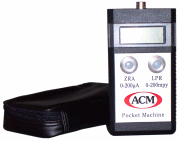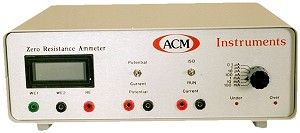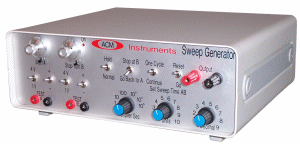Traditional manually controlled Potentiostats, Zero Resistance Ammeters and Sweep Generators still have a vital role to play. We have heard it said quite frequently, “I did my best work with a manual Potentiostat”. There is good reason for this. The raw experience of controlling an electrochemical cell by hand, gives the user a real feel of the nature of the cell being monitored, this in turn helps give the user a good understanding of Ohms Law, R=V/I and its application to electrochemical cells.
When listening to a highly complex and mathematical lecture based on data obtained by an automated Potentiostat, ex manual instrument users will always have that raw practical experience tucked away in their brains.
For instance with a manual system, a user can get a feel of the reaction time of the cell to both a cathodic and anodic polarisation. A different response time will have implications for AC Impedance tests that assume the response time is the same in both the anodic and cathodic directions.
ACM produces three types of manual instruments. These are the Research Potentiostat, Zero Resistance Ammeter and Sweep Generator. All instruments are fully floating and have buffered outputs that isolate the cell from low impedance measuring devices. A handy water resistant step-by-step manual guides the user through the setting up procedures for these instruments.
Click to view Potentiostat details
Click to view Zero Resistance Ammeter (ZRA) details
Click to view Sweep Generator details
Portable Manual Instruments
LPR MeterThis instrument is at home on the laboratory bench or out in the field. Provided with an internal lead-acid battery and mains charger the LPR Meter is a truly portable Linear Polarisation Resistance corrosion monitoring system.
|
 |
Pocket MachineThis battery powered instrument features measurement of Linear Polarisation Resistance and ZRA currents for the determination of corrosion rates and galvanic currents. |
 |



